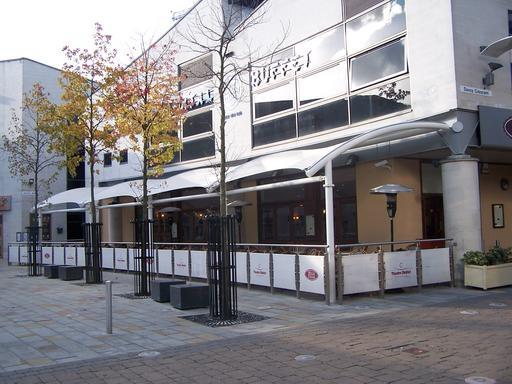
Tensile structures have reinvented architecture across India, blending engineering wonders with artistic expression. As needs grow for innovative, sustainable and beautiful construction, top producers like Archway Tensile pave the way, crafting signature works that grace both public squares and private sanctuaries. This piece delves into this world’s depths, tracing evolutions, examining awe, and exploring why it quickly becomes construction’s choice.
What Defines Tensile Structures?
Known also as tensioned membranes, tensile structures stress stretch more than compress or bend. Unlike standard structures supported by rigid frames, these use pliant skins pulled taut across networks. Usually these skins are state-of-art fabrics like PVC-coated polyester, PTFE-coated glass fibers, or ETFE films. Stress brings lightweight yet sturdy coverings spanning vast distances on minimal underpinnings.
Tradition Meets Modernity
Tent-making began these roots, but the revolution started mid-last-century through visionaries like Frei Otto and Sir Norman Foster. Their tests showed limitless shapes and performances from tension and textile. Now heritage meets innovation through modern materials and digital plans producing world-wide infrastructure icons.
The Science of Beauty
Fabric Choices
Chief materials include: durable, flexible, weather-resistant and translucent PVC-coated polyesters; PTFE-coated glass fibers; and ETFE films praised for exceptional quality.
Framework: Steel and aluminum provide the primary support, utilizing their strength to maintain precise tension across the expansive fabric.
Cables and Connectors: Durable steel cables, rods and fittings link together to ensure the membrane withstands even the harshest elements while remaining taut and anchored securely in place.[1]
Engineering Principles
Tensile structures leverage precise calculations of tension distributed through cables and sheets to achieve equilibrium, balance and resilient form. Modern design programs allow structural engineers to virtually model these delicate balances, optimizing safety without compromising natural beauty. The end result appears to float – lightweight yet enduring, simplistic yet sophisticated.[2]
Unparalleled Benefits of Tensile Structures
Owing to their exceptional advantages, tensile structures have rapidly increased in popularity:
Versatility: Easily molded into virtually any shape, size or location, from pedestrian walkways and atriums to colossal stadiums and exhibition halls.1
Visual Appeal: Their fluid, sculpted designs generate striking interior spaces, transforming ordinary areas into architectural landmarks.
Daylighting: The translucent materials fill interiors with soft, diffused sunlight while reducing reliance on artificial lights and lowering energy costs. 1
Sustainability: Require fewer raw materials and foundations, making them resource efficient and eco-friendly. Many membranes can also be recycled, further reducing environmental impact.[5]
Speedy Assembly: Prefabrication off-site allows quick, minimally disruptive on-site construction compared to conventional builds. [5]
Durability and Low Upkeep: High-performance fabrics withstand weathering, UV rays and pollutants for an extremely long lifespan requiring little servicing. 1
Cost Savings: Often necessitate less steel and labor hours, providing significant budgetary benefits especially for large-scale projects. 3
Expansive Applications
Tensile structures find uses across countless industries:
Public Infrastructure: Airports, railway and metro stations, stadiums, amphitheatres, and convention centers soar with tensile architecture.
Commercial Spaces: Shopping malls, food courts, entry canopies, and parking lots shelter activities under sail-like membranes.
Residential Areas: Terrace coverings, garden pavilions, swimming pool covers, and carports cocoon private spaces.
Events and Exhibitions: Temporary pavilions, concert stages, and exhibition tents transform landscapes for gatherings.
Recreation and Hospitality: Resorts, playgrounds, cafes, and outdoor lounges invite relaxation beneath billowing roofs.1
Limitations and Challenges
While tensile structures excel through remarkable feats of engineering, persistent difficulties remain. Extremely vast roofs pushing the limits of span and scale may prove less feasible without pioneering solutions. Specialized calculations and customized designs demand complex initial planning. High winds, heavy snow, or lightning underscore the necessity of robust engineering for safety and longevity against hazardous weather.[1] Maintaining pristine membranes cleaning and inspecting regularly, becomes critical especially in polluted urban settings.[1]
The Role of Innovation: Digital Fabrication and Sustainability
Modern tensile architecture thrives through relentless innovation. Computer modeling, structural analysis and simulation tools empower engineers to surpass all boundaries of form and function. Custom fabrication techniques, high-frequency welding and membrane patterning ensure precision results and exceptional quality.[6] Sustainability infuses all aspects, with manymembranes offering recyclability, UV blocking and energy-saving insulation properties.[4]
The Indian Context: Leading Transformation with Archway Tensile
India emerges as a dynamic market for tensile structures, fueled by rapid urbanization and demand for distinctive architectural statements. Manufacturers such as Archway Tensile epitomize industry excellence, merging international standards with local understanding. They play a pivotal role in:
End-to-End Solutions: From conceptualization and engineering to fabrication and final installation, ensuring customized results for diverse sites and climates.
Rigorous Testing: Utilizing cutting-edge machinery and stringent quality assurance protocols to consistently deliver durable solutions imbued with safety and beauty.
Bespoke Design: Crafting flexible, customized designs through close collaboration with clients—adapting materials and plans to suit diverse needs from heritage preservation to modern campus developments.
Sustainability at the Fore: Championing the utilization of recyclable fabrics and efficient construction techniques tailored for India’s climatic realities.
The Future of Tensile Architecture
Biophilic Spaces: Weaving nature into the built environment through integration of greenery and living elements to nurture wellness and sustainability.
Intelligent Textiles: Pushing boundaries via membranes that merge solar power, monitoring, and reactive shading— synthesizing technology and design.
Computational Creativity: Leveraging algorithms and computational design to unlock previously unimaginable organic forms, redefining functional performance and aesthetic benchmarks.
In Conclusion
Tensile structures epitomize the skillful fusion of imagination and expertise. As urban transformation accelerates across India, the demand grows correspondingly for efficient, sustainable, and striking constructions. Firms such as Archway Tensile, grounded in quality and innovation, help materialize visions—forging not merely weather-resistant covers but icons for a new era.
From bustling transit hubs to serene courtyards, tensile architecture is imprinting India’s skylines with grace, resilience, and luminosity. As materials and methods progress, so too does the promise of these remarkable structures to inspire generations of innovators to push boundaries—and to do so with both panache and conscience.







